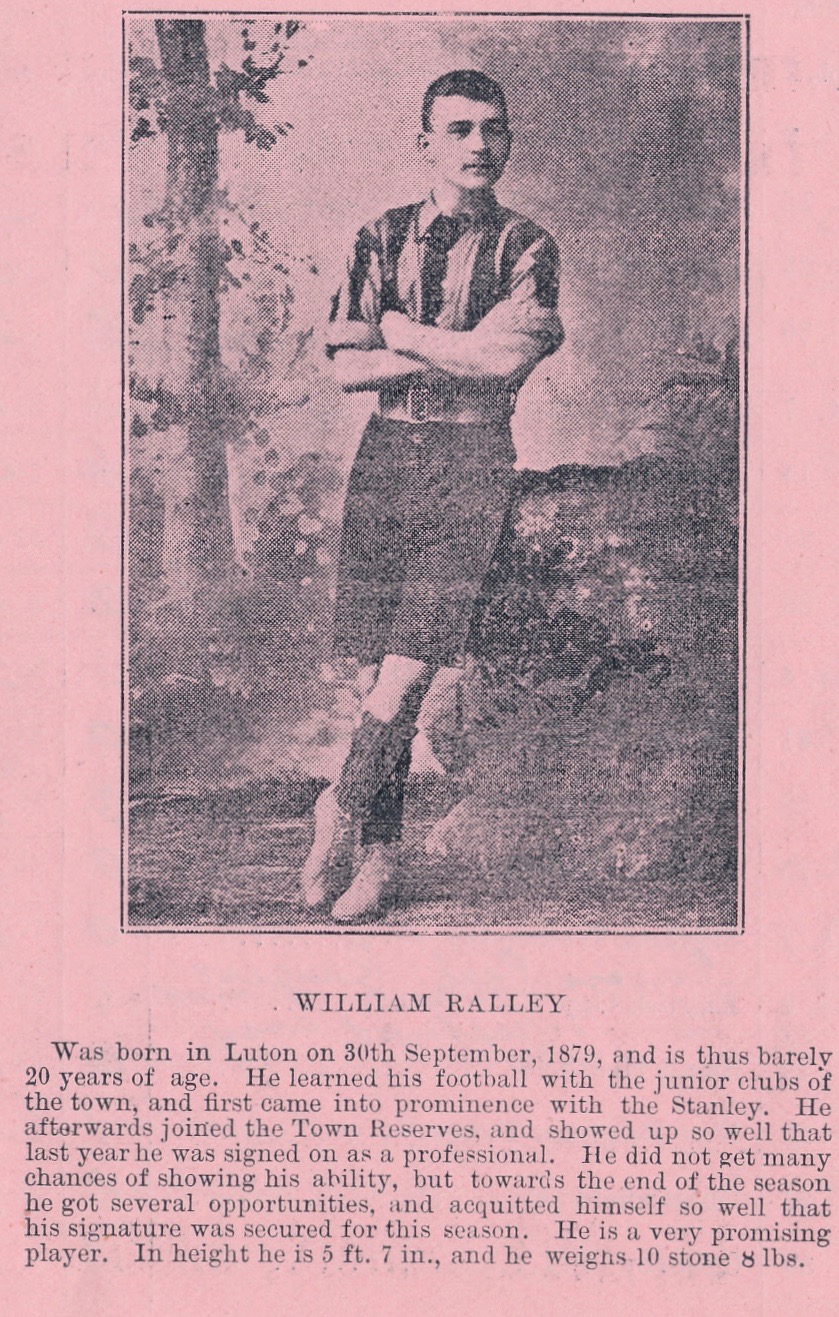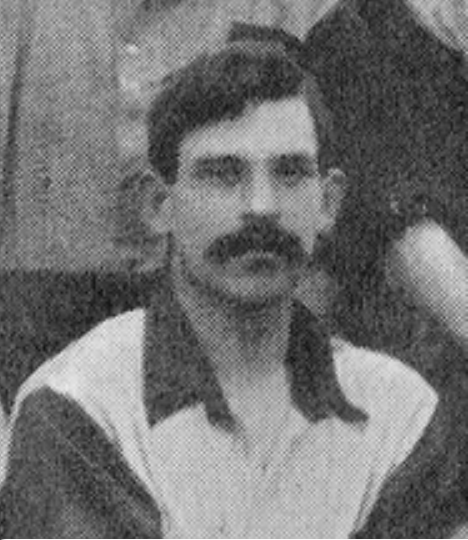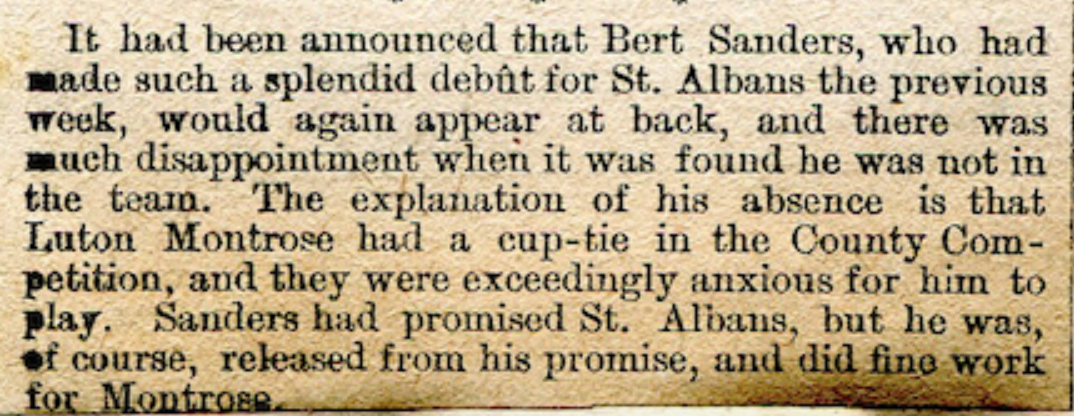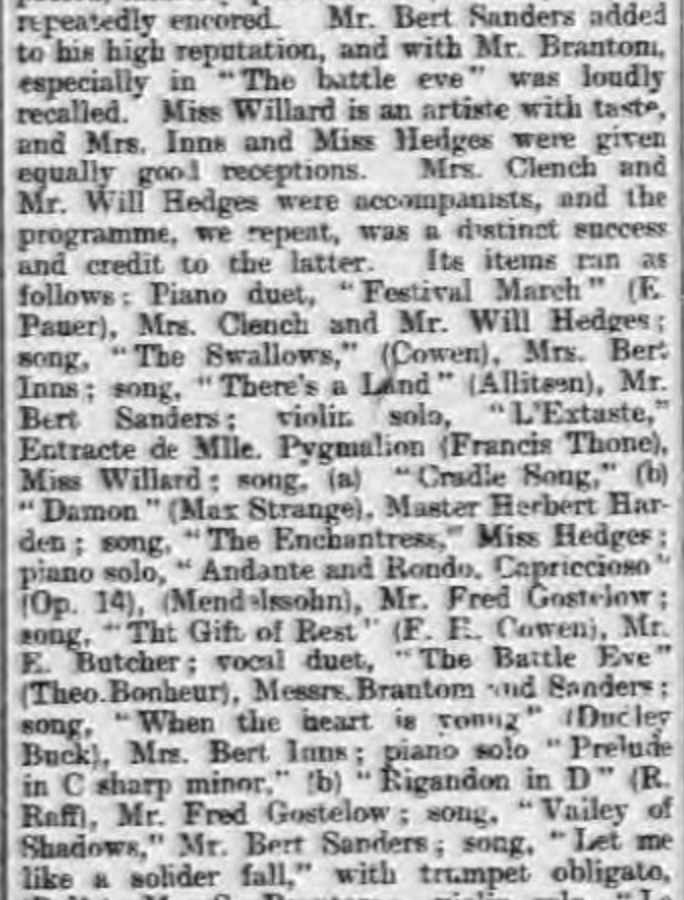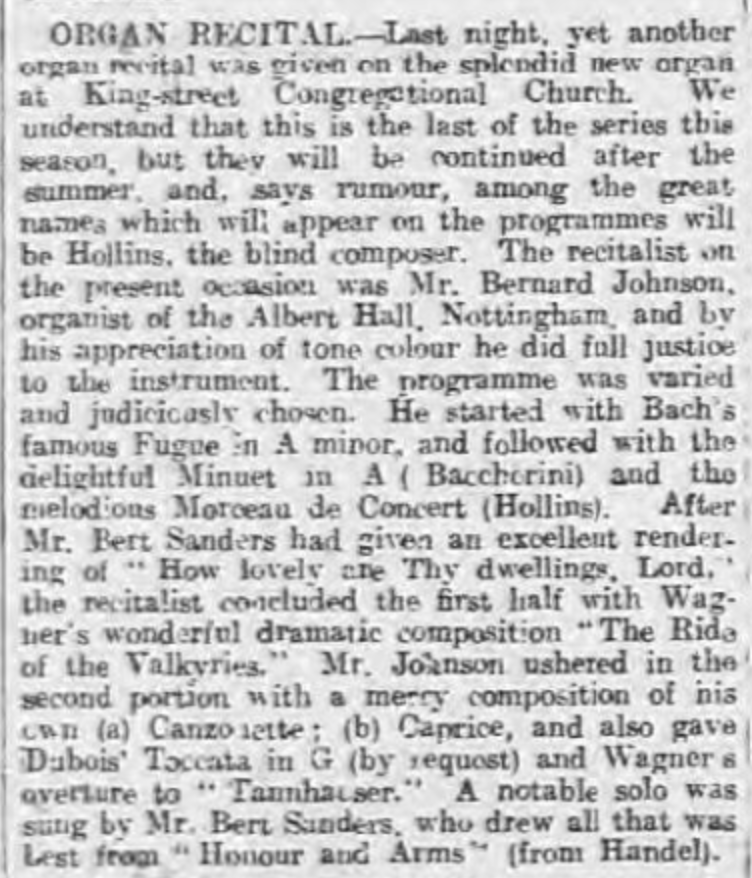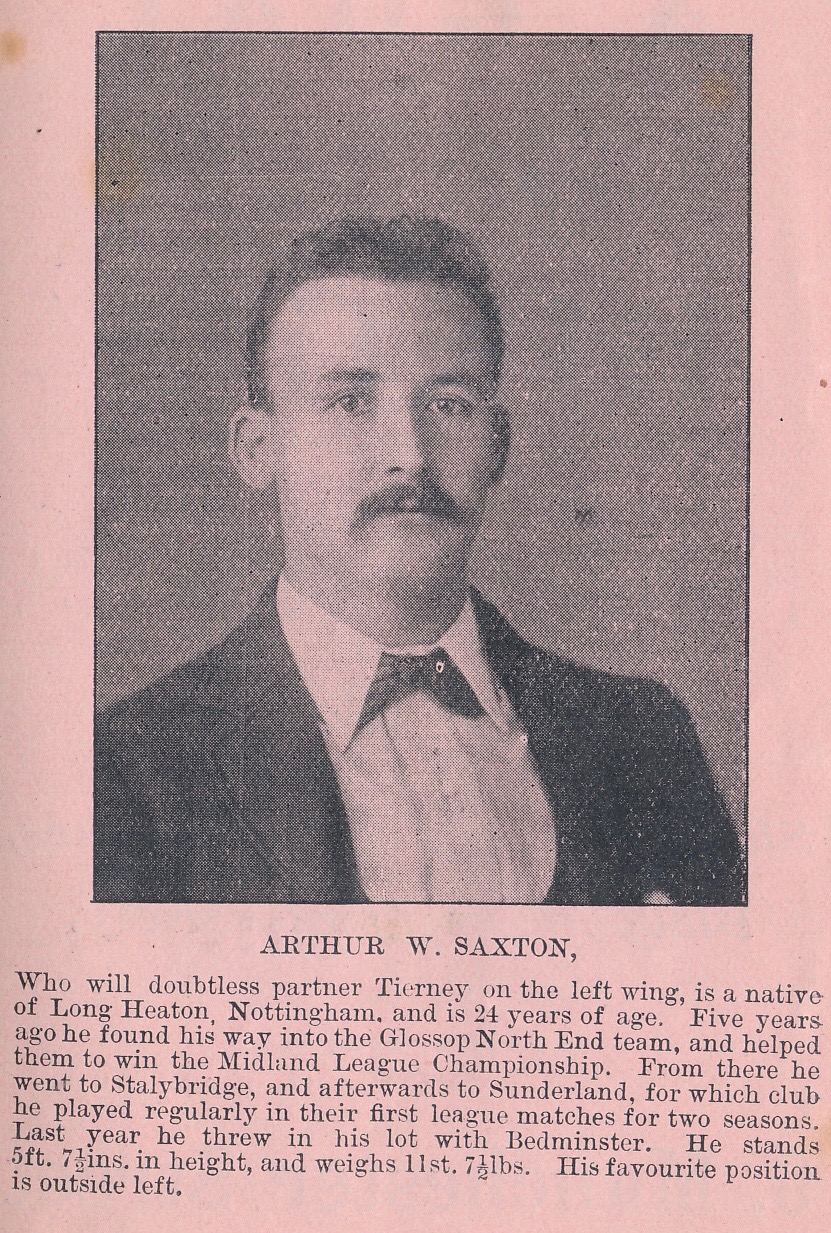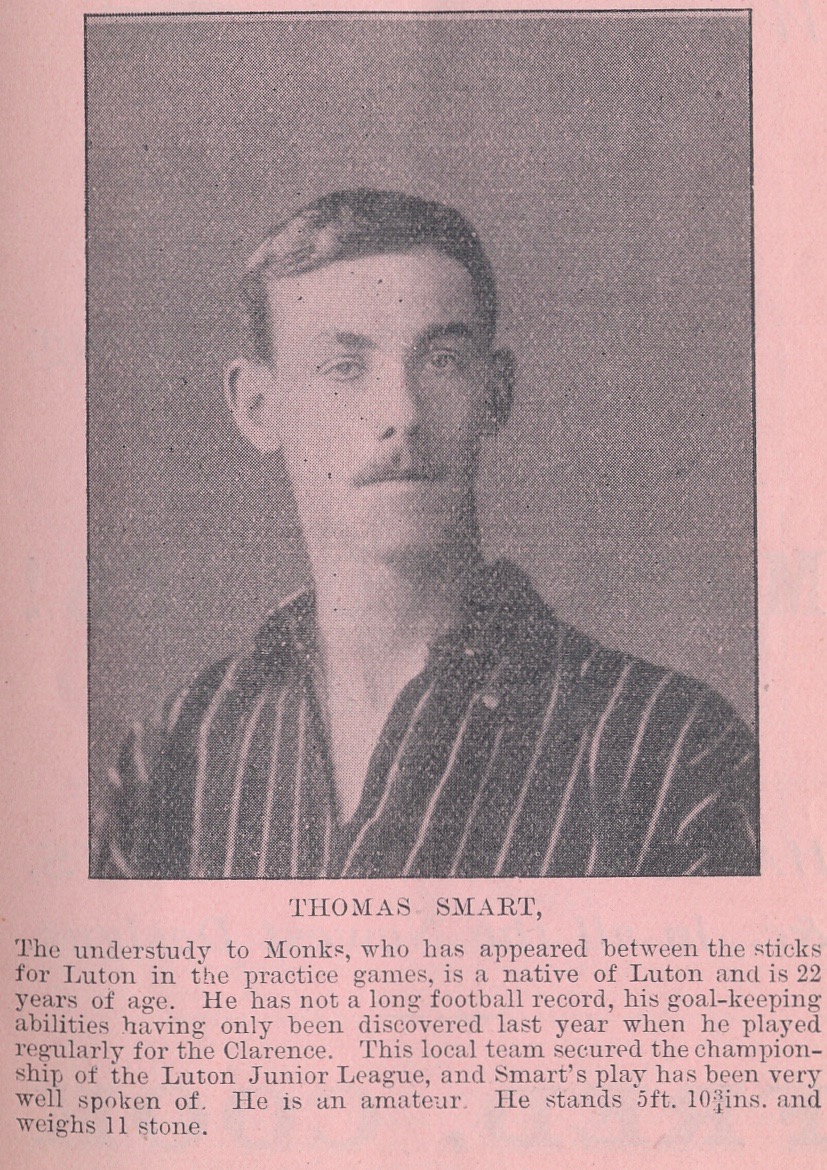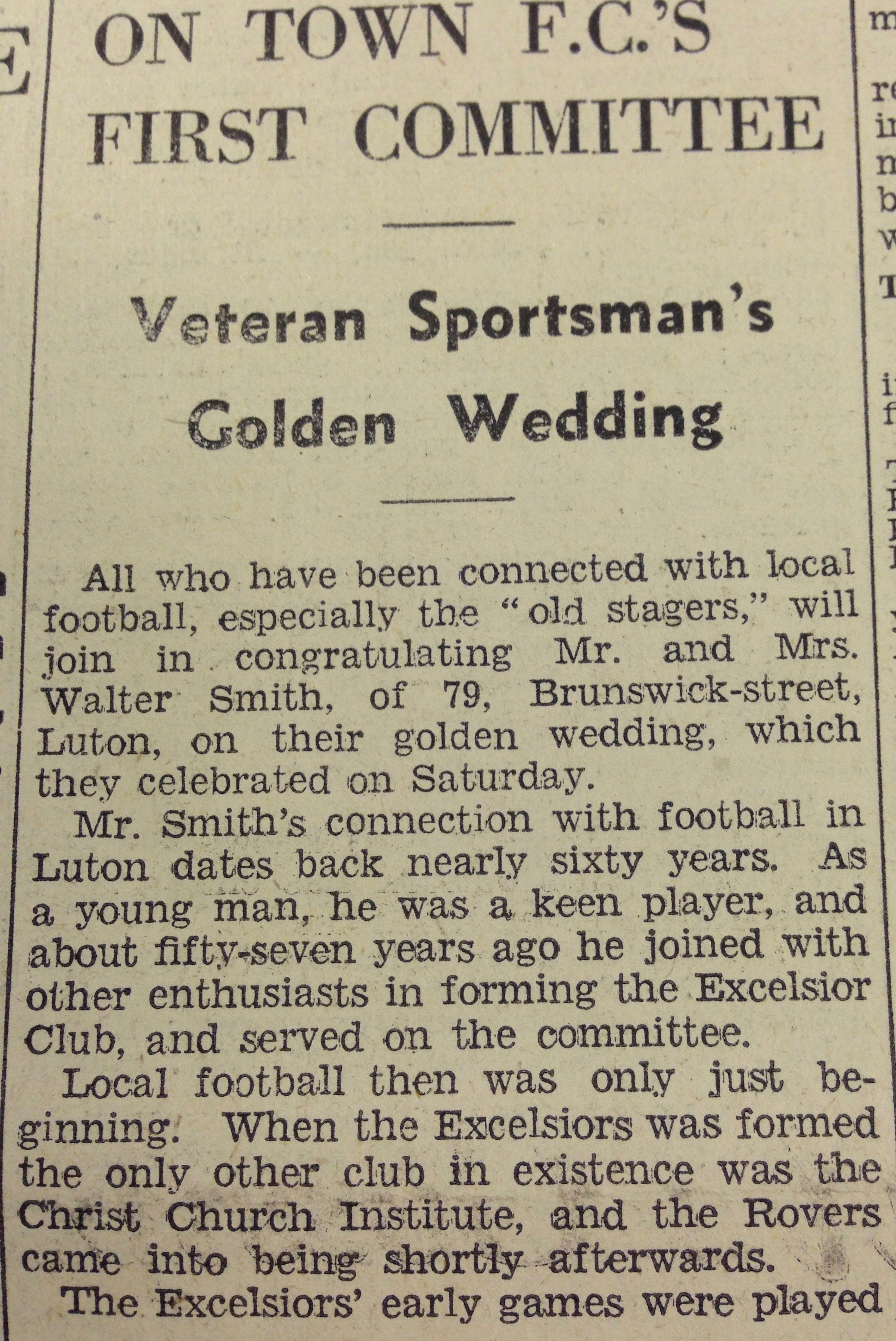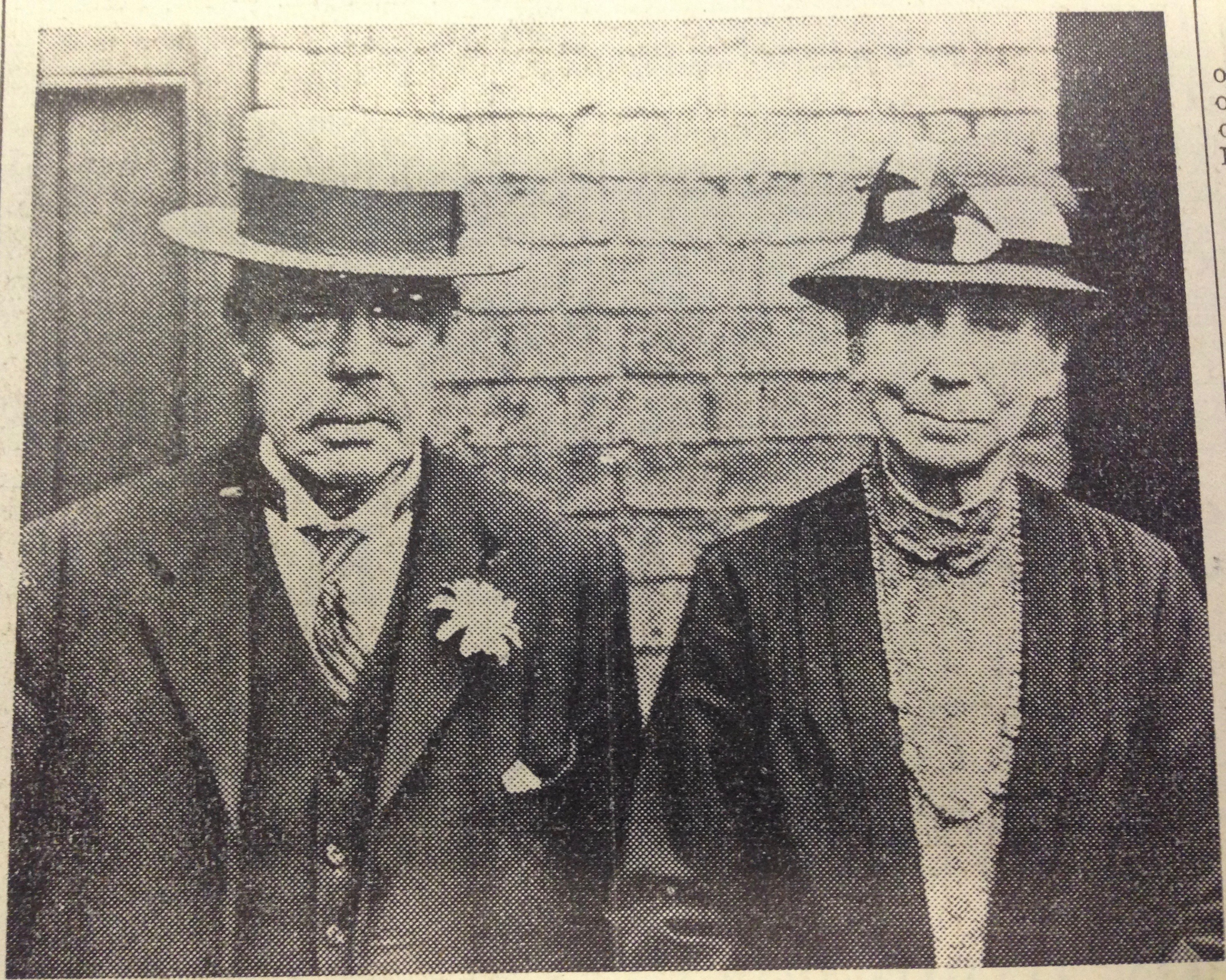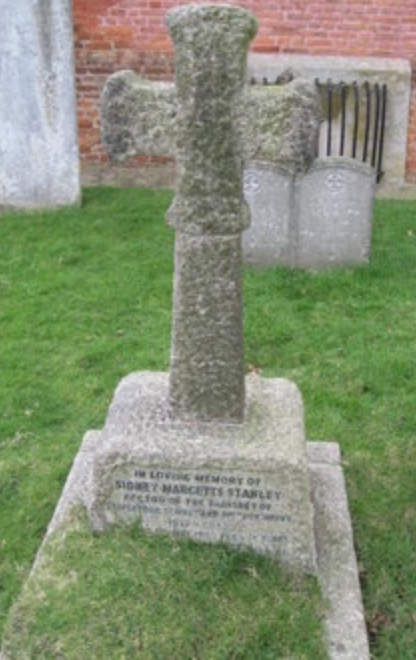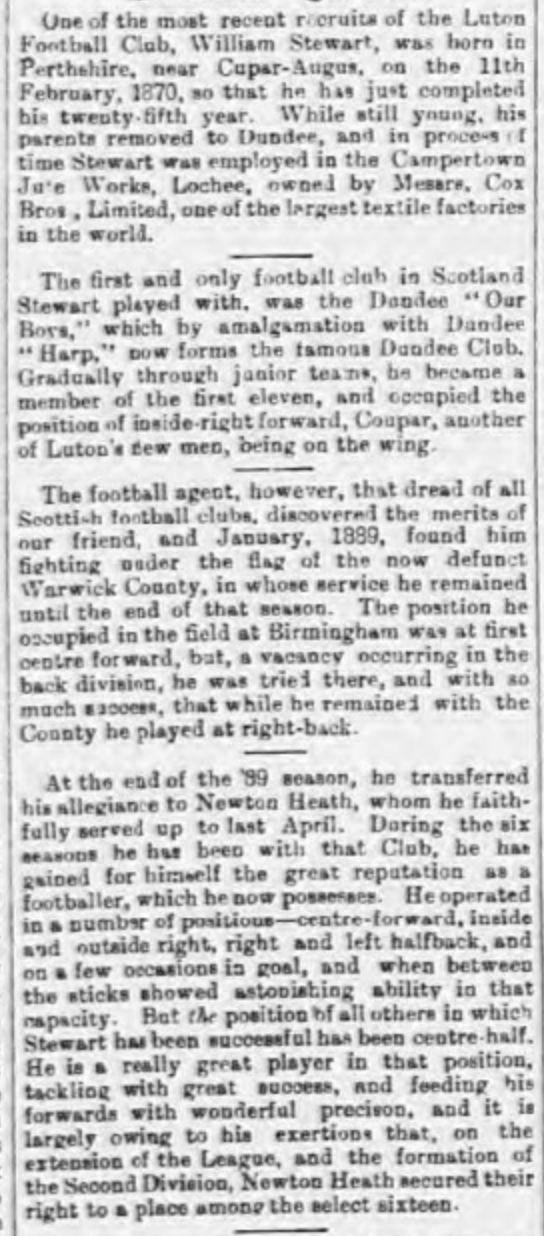William Ralley
William played 29 games for the Straw Plaiters.
**************************************************************************
Albert Edward Sanders
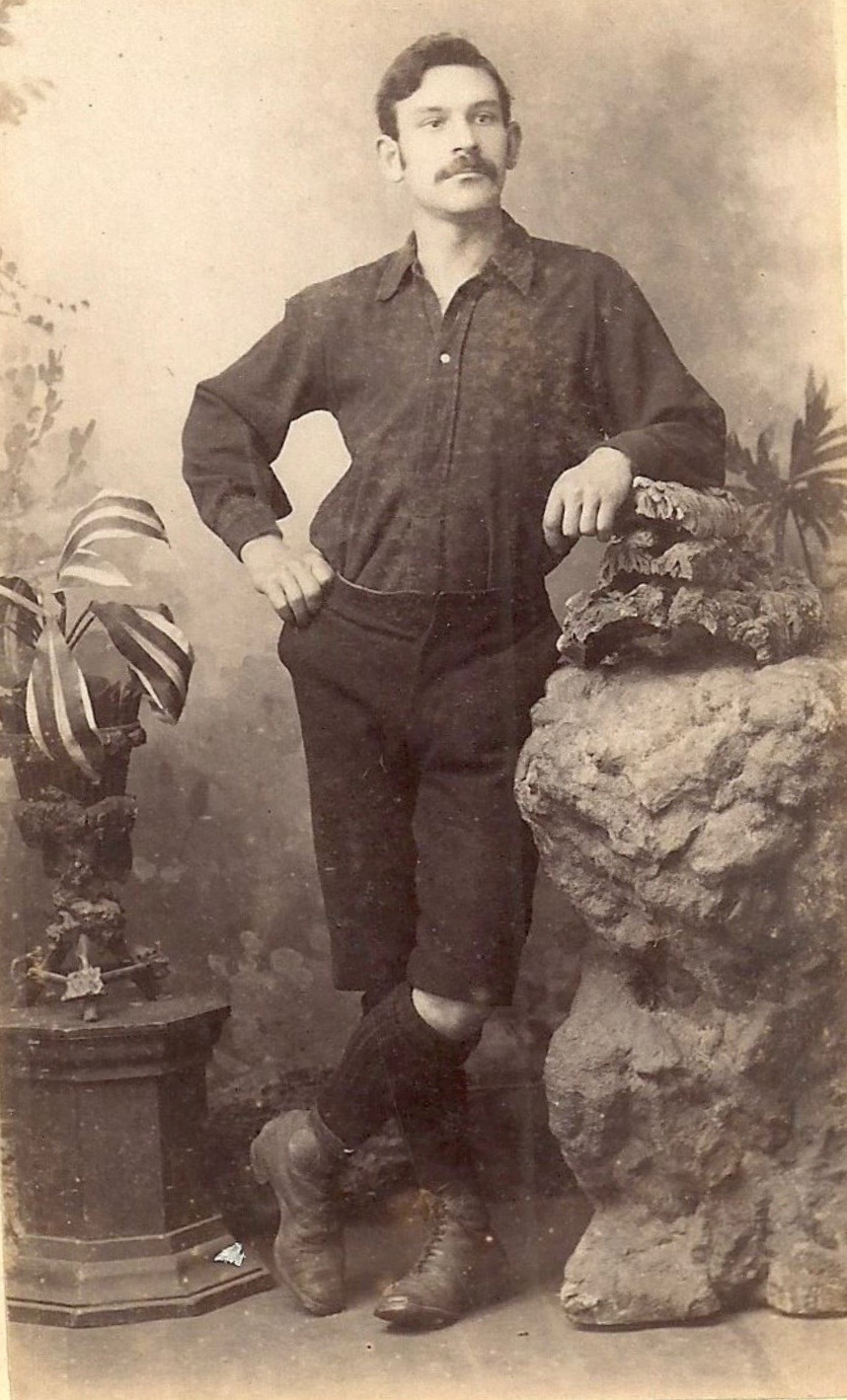 Born in late 1869 in Dunstable to Frederick and Jane Sanders. At the time of the 1871 census they lived at 4 Ashridge Villa in Dunstable. Frederick was a Straw Hat Warehouseman and they were quite wealthy as they could afford a servant. By 1881 Bert was living with his parents at 53 Rothesay road.
Born in late 1869 in Dunstable to Frederick and Jane Sanders. At the time of the 1871 census they lived at 4 Ashridge Villa in Dunstable. Frederick was a Straw Hat Warehouseman and they were quite wealthy as they could afford a servant. By 1881 Bert was living with his parents at 53 Rothesay road.
The following clip from the Luton News from 1892 gives some interesting details about Bert;
“Began playing football as a boy at Mr Newman’s school in Wellington Street; with the Moor as their scene of operations, he and some fellow pupils once banned a schoolmate from playing because of the boys’ large size. That boy (whose identity cannot, unfortunately, be unearthed) was one of the executive committee when “Bert” joined the Town.
Prior to that he had, with a few others founded the Albany Club, with its home pitch at Mr Scarborough’s meadow in Dallow Lane.
For three years he remained with that club before being selected to play for Luton Town against Hitchin. His excellent performance on that occasion gave rise to his being selected regularly for the Town, a task which he undertook with the utmost fervour. Bert was well known for his sure tackling and generally proficient performances, a fact which did much to spread the confidence among the remainder of the team.
Among his other claims to fame were his musical talents, something which brought him often to the public eye.”
This clip gives us some useful information about the Albany club which came from nowhere to become one of the leading clubs in the town by 1885. The clip also confirms my thoughts that the Albany club was made up of enthusiastic young men who really influenced football in the town. Men such as Bert Sanders and Walter Miller (see the latters Hall of Fame entry) impressed in the Albany team and were soon given their debuts in Luton Town reserves. They were among the first of the young players given an opportunity just as J.C. Lomax had promised on the 11th April 1885. Bert was a reliable back with a good kick but also liked to get forward making “dodging runs” and possessing a fine shot.
The London Evening News January 1892 gave a profile;
“Sanders is an old hand, this being his fifth season in the team. He is not by any means old as far as age is concerned, for he commenced playing when he was only 16 years of age. He is not a big man, but is very plucky and kicks well.”
His form dipped in the the last part of the 1891/92 season and he was dropped from the first team. He fought back and regained his place in the team the following season. Bert played last game for Luton Town on Easter Monday 1893 when he made a rare error to let Derby County in for their first goal in a 3 2 defeat. Bert joined Luton Montrose having received the necessary permission to return to amateur status. It may be that he was uneasy about professional status or his business might have got in the way.
Bert, like Walter Miller, was musically minded and this Luton News of the Luton News of 20th November 1891 says –
“By the way, Bert is just starting in business, having taken premises in Manchester-street. He has my heartiest wishes for success, for no-one more deserves it, and the long and practical experience he has had should stand him in good stead.”
Bert was tempted to join other ex Luton players in the St. Albans team – the photo above right was taken for the 1895/96 season and he wears their pink and black shirt.
The above clip is from a Hertfordshire Newspaper shortly after his debut for St. Albans.
Bert played 12 games for St. Albans in his first season, 24 times in the second season, 25 in the third and 17 in the 1897/98 season. He scored two goals and played his last game in January 1898.
He married Elizabeth Batchelor in Castleford, Yorkshire on the 9th August 1899. The 1901 census has Bert and his wife and child Elsie living at her parents in Castleford, Yorkshire. Bert was working as a piano tuner. This must have been temporary as Bert was involved in many concerts in Luton and the district at this time. Entertainers of all kinds were in high demand and Bert was either invited or hired to perform at many events. The clip below left from the Luton Times of the 9th March 1900 shows that he soon developed a reputation which would help him obtain more bookings. The Luton Times of the 23rd February 1912, below right reports on an organ recital at the King Street Congregational Church. Bert was also an accomplished singer.
The 1911 Census has Bert living in Rushden with his wife Elizabeth, daughter Elsie and son Reginald. Bert was a Pianoforte Warehouse Manager and they could afford a servant.
Bert died in the summer of 1941 in Luton.
*******************************************************************************
Arthur Saxton
Arthur played 21 times and scored 9 goals.
******************************************************************************
DAVID SHARP
David played 35 games for the club but did not manage to score.
**************************************************************
Thomas Smart
Thomas played five first team games.
**************************************************************************
Walter Smith
Walter was born in Luton in 1861. By the time of the 1881 census he was living with his parents at 96 Wellington Street and his occupation was a Blocker. We know from the clip of his Golden Wedding Anniversary in 1936 that Luton Excelsior was formed in a “blockhouse”in Wellington Street. It may be that Walter’s house was one that had a blockhouse in the back yard. Or the blockhouse referred to was elsewhere in Wellington Street.
When I looked at the list of players in the town for the early 1880’s I saw that “W. Smith” cropped up regularly. At the time I thought that the frequency meant that there were a number of W. Smith’s playing in the town at that time. That still may be the case but I am confident that most entries refer to Walter and he appeared in a variety of positions for Excelsior, Wanderers, Park Rovers and Luton Town. Walter served on the Luton Town committee from 1890 until 1892.
Walter married Ada Worboys on the 31st July 1886 at St. Matthews Church, High Town, Luton. They set up home at 79 Brunswick Street where they lived for the rest of their lives. Walter was still a Blocker in 1911. They celebrated their Golden Wedding Anniversary on the 31st July 1936 and the Luton News covered it. The clippings are from the 8th August 1936 edition.
Ada died in the Summer of 1937 and Walter on the 26th March 1939 at the Luton Infirmary.

************************************************************************
Sidney Margetts Stanley
Born on 6th May 1868 at Hardingstone, Northamptonshire. In the Michaelmas term 1878, Sidney attended St. George’s School, Brampton, Huntingdonshire (which later moved to Harpenden). Quotes are from the St. George’s School newsletter.
The School Magazine says that in 1883 Sidney played in a Past versus Present football game. Sidney plays for “Present.” In 1885, he is described as being a new master, but this may have been on an informal basis. He was captain of the cricket team and the football team. His football profile in the School magazine is as follows –
“Brilliant at all points of the game, dodgy dribbler, “shoots” with judgment, to his captaincy is due in great measure the success of the Eleven.”
Sidney was elected to the Games Committee and also played tennis. He was given a half-day holiday in honour of passing 2 examinations at Dublin, Trinity College.
1886 saw him again on the Games Committee playing football, cricket and was time keeper for the Athletics. He was included in the Cambridgeshire county team but also turned out for Hertfordshire. On 14th December 1887 Sidney and S.F.P. Moore both play for Hertfordshire against Huntingdonshire at St. Albans.
In 1888 the School had changed it’s uniform to
“Cardinal and slate shirt, s. George’s cross on breast; cardinal and slate cap.”
In the team profile Sidney is described as;
“an excellent forward on the left; very fast, and very neat with the ball; shoots hard and well.”
Sidney was given his Cambridge County Football Colours and kept busy with all manner of school duties. He was on the Games and Tuck shop committees, gave a subscription for the new Chapel at the school. At this time he definitely was teaching at the school and
joined in the entertainment evenings and played “fives.” He played for Watford Rovers.
His 1889 football profile describes him as a
“Good and energetic forward on the right; dribbles cleverly and with great judgment; excellent shot.”
Played for Cambridgeshire against Northamptonshire.
1890. Sidney played forward for Wisbech against Cambridge Rovers in the final of the Cambridgeshire Cup. He took his B.A. Degree at Trinity College, Dublin and was involved in concerts and theatricals at the school.
Luton Town at last noticed the wealth of talent on their doorstep in Harpenden and invited four Masters to play (Stanley, Moore Bennett and Gill). On the 11th October 1890, Sidney made his Luton Town debut in a home defeat to Great Marlow. A fortnight later he scored in a 4 1 win over Tottenham Hotspur.
Professionalism had arrived at Luton so the Harpenden Masters, who were also somewhat unreliable, were dropped from the team in favour of local men. Sidney made his last appearance for Luton Town on the 28th February 1891 when he scored in a 4 1 home defeat to Bedford.
He went on to play for St. Albans and played for Cambridgeshire v Surrey. School life continued in the same vein as before playing football, cricket, fives and quoits and joining in the entertainment evenings.
Sidney left St. George’s School in 1894 the school magazine stating that they were –
“losing a very old stager this term and 16 years man and boy.”
He passed his B.A. degree at Dublin and on the 22nd December 1895 he was ordained Deacon at Chelmsford – to be curate at Ware. He returned to St. George’s School as part of the Reverend C.W. Bennett’s visiting football team.
By 1896 he is known as Reverend S.M. Stanley B.A. and he subscribes to the Schools’ “Old Georgian’ magazine for old boys’. He played cricket in the “past” team and on the 20th December was ordained Priest at St. Albans.
By 1897 Sidney has moved to Ware, Hertfordshire. He again returns to his old school with a team to play football from “Young Men’s Friendly Society, Ware.” At the School’s Queens Jubilee concert he sings solo, in a duet and performs in the theatrics. He brought his team again to play St. George’s School again in 1898. He performs in a concert and theatricals again. He is now described as a priest at St. Mary’s, Ware.
He married Mildred Florence Kirkby in 1903
Sidney died on 5th May 1943 in Colchester Hospital. He resided at the time with his wife at the Rectory, Stapleford Tawney, Essex.
Thanks to Sue Mitchell at St. George’s School, Harpenden for her very generous help.
*************************************************************************
William Stewart
William was interviewed by the Luton Times who published the following in their 21st June 1895 edition;
William played 105 games scoring 38 goals for the Straw Plaiters.


